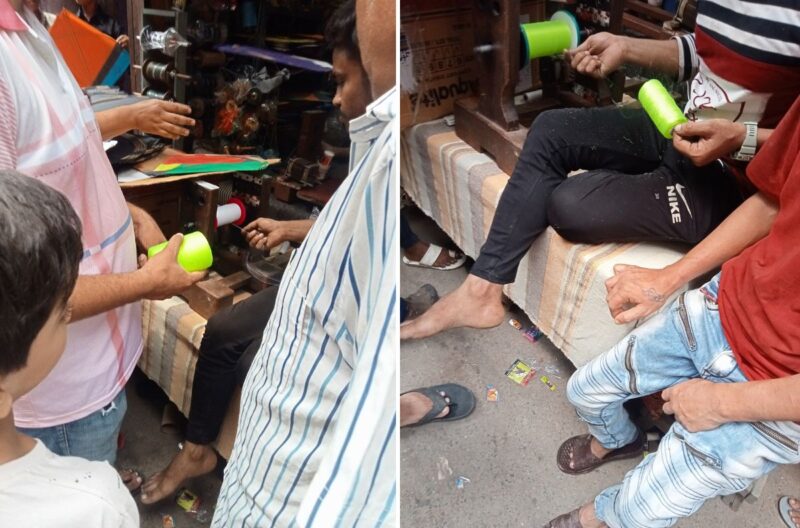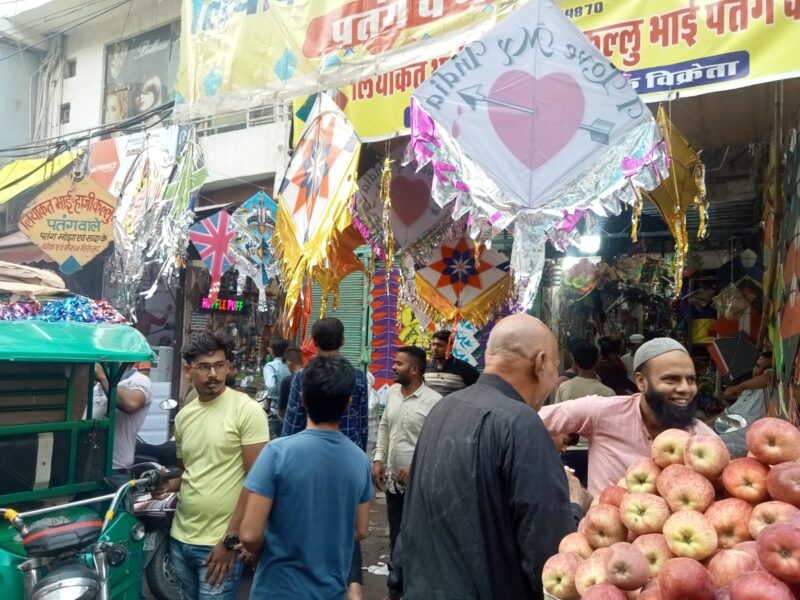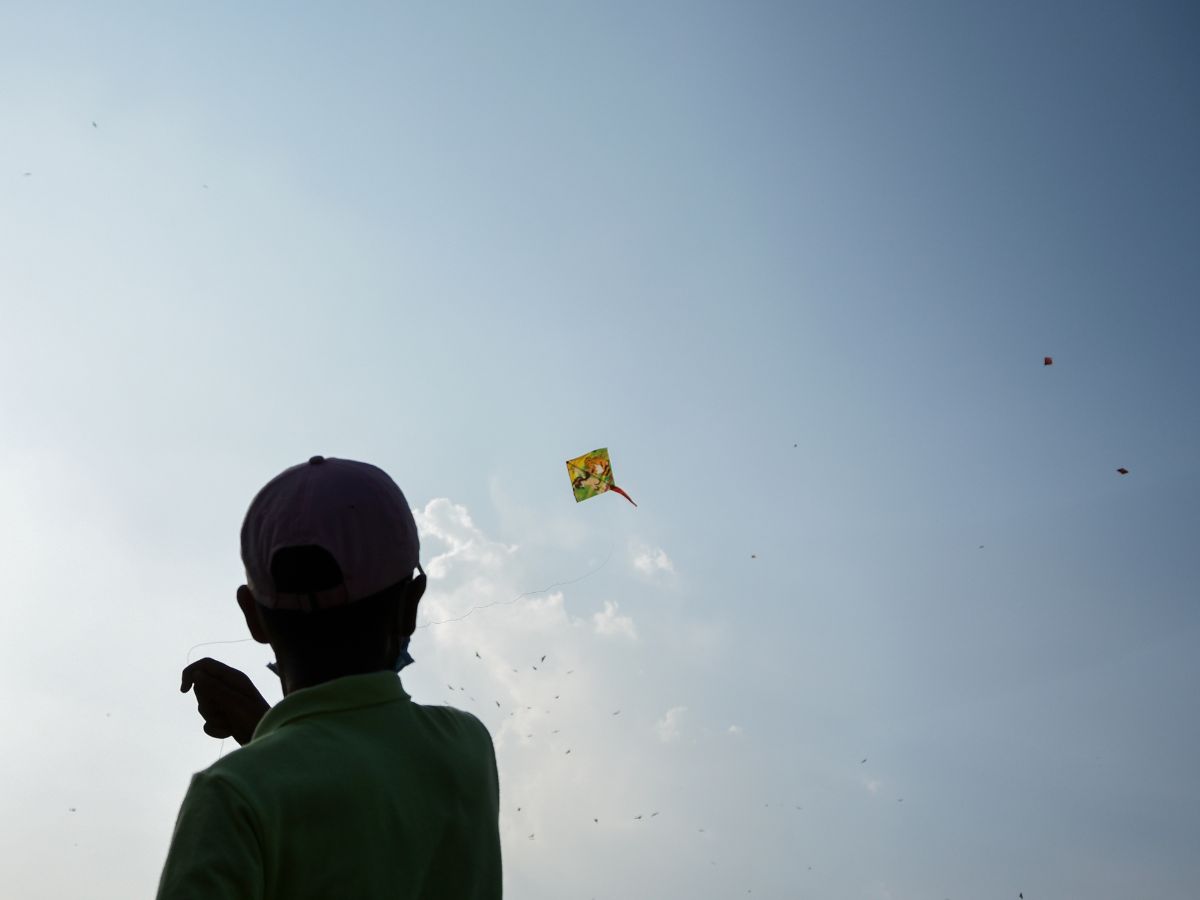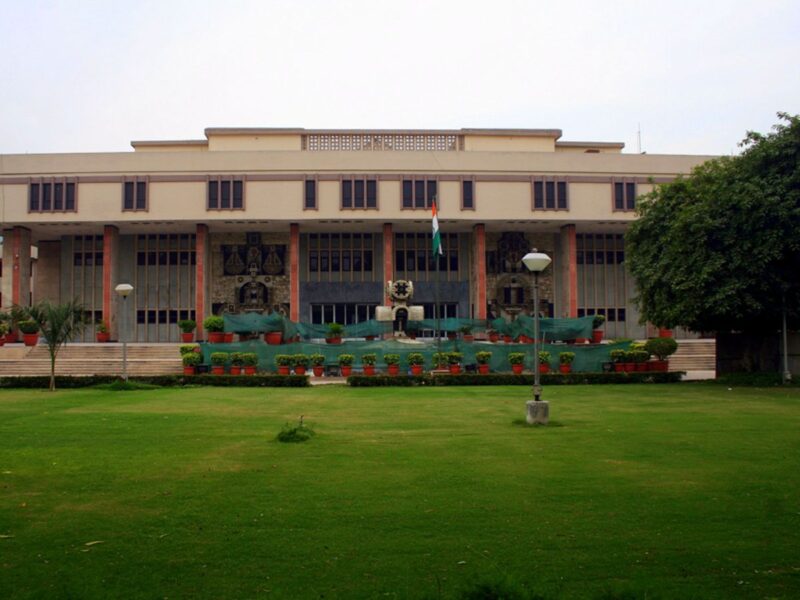As two-wheeler drivers speed down highways and flyovers, an invisible enemy falls out of the sky and strangles them, slits their throats or causes them to lose their balance and fall. Often, the consequences are fatal. The number of birds and animals who are injured or killed is not recorded.
Following the distressing deaths of at least five such citizens of Delhi due to entanglement with ‘Chinese manjha’, Patriot visited the markets where it is allegedly sold, despite a ban, and tried to track down the culprits who make kite-flying such a deadly sport. A source had suggested a visit to a particular shop in Old Delhi posing as a customer.
Sure enough, upon reaching the spot, a customer could be seen standing with a Chinese manjha in his hand. However, when asked about it, the shopkeeper denied its availability in the shop.
Upon closer questioning, the shopkeeper said that the customer had obtained it from somewhere else and was just rolling it on the charkhi (reels for strings) that he had just bought. The customer himself said at first that the shopkeeper stocked it and then denied it after a moment of thought and said that he had obtained it from somewhere else.

Easily available
A few customers revealed that the manjha can be obtained secretly in Patang Bazaar near Lal Quan. However, when Patriot visited Patang Bazaar and inquired about the manjha, all the shopkeepers denied selling it. “You can only find it in the police station now”, one of them joked.
Yet Aslam, a young customer aged around 20 years, could be seen visiting every shop in the area looking for the manjha because he “cannot fly kites with normal strings.”
While the manjha is banned and the police are supposed to keep a check on its sale, its availability and demand in the market cannot be denied. In August, when the national capital observes kite-flying as a festival of freedom, it becomes an even more serious threat.
According to the National Green Tribunal judgment of 2017, the term “Chinese” is just a terminology used for nylon/metallic/synthetic threads. In reality, the string is predominantly manufactured in Uttar Pradesh’s Bareilly – which is famous for its manjha and kites – and in parts of Madhya Pradesh. If so, then these state governments can easily stop this menace at its roots.
Contrary to popular belief, these days the flying of kites does not take place primarily in Old Delhi. “Most people fly kites on grounds around highways and flyovers”, says Mohammad Ghayas, general secretary of the Kite Flying Association, Delhi. Due to the lack of access to open fields, as in the old days, enthusiasts pick spots in the limited spaces without overhead wires, buildings and trees where they can easily practice the sport.
“Young kids who live near such places – or the ones who visit such places – use the manjha because they are not aware of the consequences of its use”, he adds.
Rueing the fact that the deadly string is giving the sport a bad name, Ghayas agrees that it can be easily purchased from the market. “The ban has not done enough. Shopkeepers still sell the manjha to young kids or those who personally know the sellers”, he says. He says that the manjha is popular because it is cheap and unbreakable – which is what draws kids to it.
“I sell kachcha manjha (normal strings)”, says Mohammad Raees, a kite seller in Old Delhi. “The reason a lot of people want Chinese manjha is because it is very cheap. For Rs 100, you can get six miles of Chinese manjha. Whereas you get the same length of normal manjha for Rs 500”, he adds.

/ Photo: Mohd Shehwaaz Khan
Raees states that the Chinese manjha has been in the market for almost 20 years but its popularity increased only in the last five years – ironically, since the time it was banned by the NGT. “Our businesses and reputation have been severely harmed because of this evil product”, he remarks.
Police not serious
According to the NGT judgment of 2017, the Chinese manjha is harmful to the environment as it is non-biodegradable, does not break, and is sharp as a razor.
Mohammad Azhar, a 33-year-old member of the Kite Flying Association, demonstrates how the Chinese manjha kills and injures people and animals. “Like this, Chinese manjha never breaks”, he says as he presses a string on his skin. It breaks in a few seconds.
“The ban is not enough because the punishments are not strict”, says Kamal Kishore, vice-president of the Kite Flying Association. “A lot of times, police just ask the sellers to pay a ‘penalty’ and do not take any legal action against them. What is the use of the ban if you can not put the violators in jail?”, he asks.
He adds that strict action is taken only during the time of festivals or Independence Day. The injuries to birds and humans can be easily avoided if the police take legal action and remain vigilant the entire year, he says.
Death factories
Ghayas alleges that although the manjha is banned in the country, there is no action against its manufacturers. “Tell me, why is manjha even available in the market?” he asks. “If people fail to obtain it, all the problems will end. The government does not put any restrictions on the manufacturers because they are big businessmen and politicians and there is a lot of money in this business”, he alleges.
Ghayas also alleges that the central government is not doing enough regarding the ban and the seriousness of the issue because of the big money involved. He requests the ruling party to create more awareness around it and take strict actions against those who are involved in the business of its manufacturing and distribution.
Both Kishore and Ghayas, being heads of one of the oldest kite-flying associations in Delhi, are trying to save the image of kite-flying as a harmless sport. “It is a sport of love and traditions”, says Kishore. They argue that if the issue of Chinese manjha remains unchecked, the traditional sport of kite-flying will be banned – petitions in this regard have already been filed in the courts.
Apart from the ban and strict legal action, they want the police and civic bodies to create awareness among children with special campaigns around its use in schools and daily patrolling by the police.
“A lot of people sell the strings as a product used for fishing or sewing. This also has to be checked and proper actions should be taken against those who are involved in such activities”, Kishore says.
More damningly, Ghayas says that even during the runup to Independence Day when the police are more vigilant in crowded markets, Chinese manjha can be easily obtained in secret or ‘by young kids.’
For more stories that cover the ongoings of Delhi NCR, follow us on:
Instagram: instagram.com/thepatriot_in/
Twitter: twitter.com/Patriot_Delhi
Facebook: facebook.com/Thepatriotnewsindia





